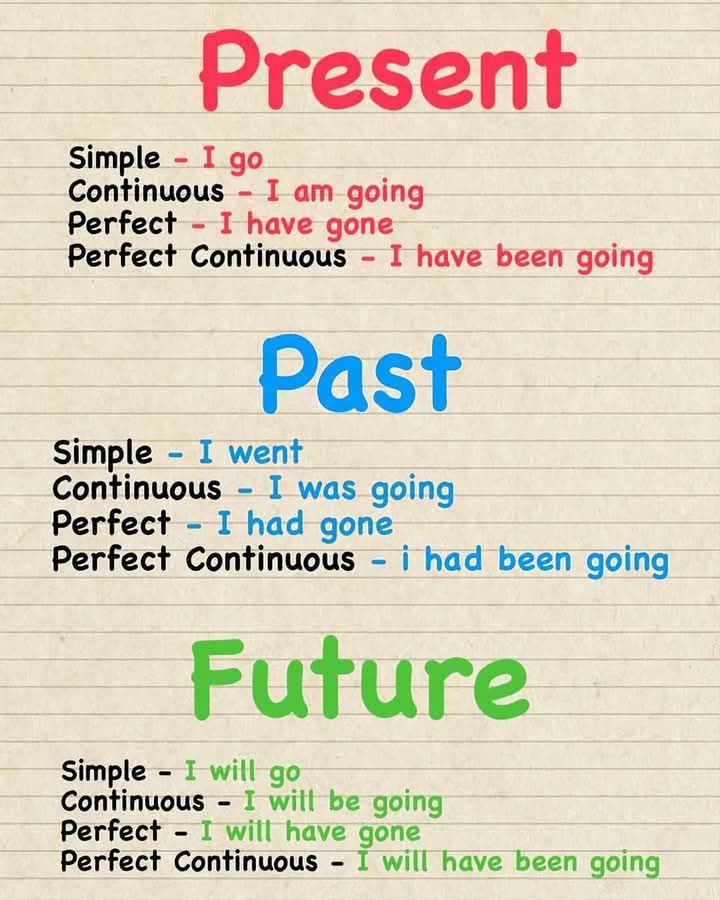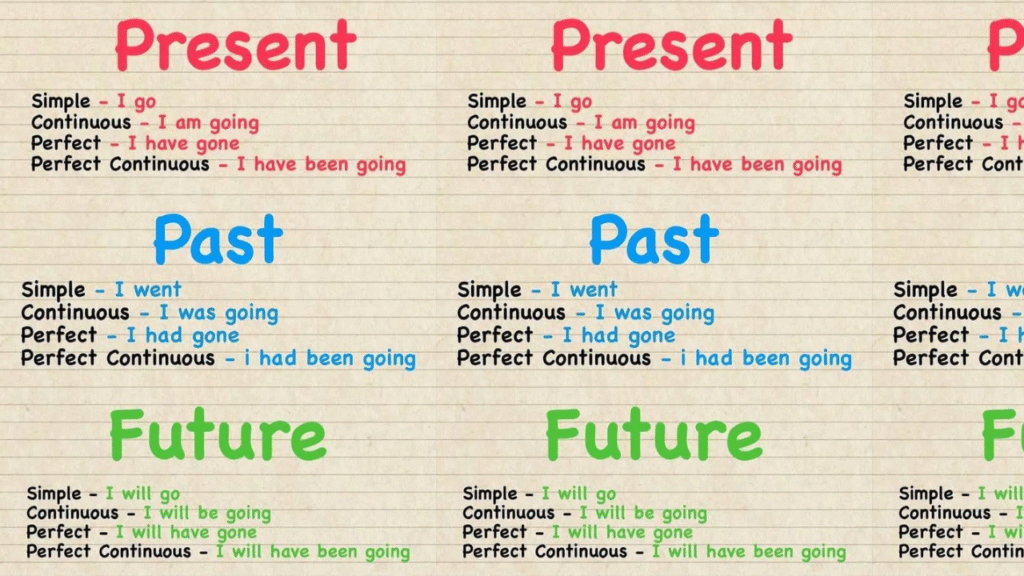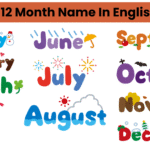Understanding the 16 tenses in English grammar (formula and examples) is crucial for mastering the language. This guide provides clear formulas and examples to help you grasp each tense effectively.

📘 What Are Tenses in English Grammar?
Tenses indicate the time of an action or event. English grammar comprises three main tenses:
Present Tense
Past Tense
Future Tense
Each of these is further divided into four aspects:
Simple
Continuous (Progressive)
Perfect
Perfect Continuous
📊 Overview of the 16 Tenses in English grammar
Tense Formula Example
- Simple Present Subject + V1 (+s/es) She writes daily.
- Present Continuous Subject + is/am/are + V1 + ing They are reading books.
- Present Perfect Subject + has/have + V3 He has eaten lunch.
- Present Perfect Continuous Subject + has/have been + V1 + ing I have been studying since morning.
- Simple Past Subject + V2 She played the piano.
- Past Continuous Subject + was/were + V1 + ing We were watching TV.
- Past Perfect Subject + had + V3 They had left before I arrived.
- Past Perfect Continuous Subject + had been + V1 + ing He had been sleeping for hours.
- Simple Future Subject + will + V1 I will go to school tomorrow.
- Future Continuous Subject + will be + V1 + ing She will be writing an email.
- Future Perfect Subject + will have + V3 We will have finished the work.
- Future Perfect Continuous Subject + will have been + V1 + ing He will have been working all day.
- Present Conditional Subject + would + V1 I would travel if I had money.
- Present Conditional Continuous Subject + would be + V1 + ing She would be driving now.
- Perfect Conditional Subject + would have + V3 He would have gone earlier.
- Perfect Conditional Continuous Subject + would have been + V1 + ing They would have been sleeping.

16 Tenses in English Grammar (Formula and Examples)
Simple Present Tense
Formula: Subject + V1 (+s/es)
Usage: Expresses habitual actions or general truths.
Example: She writes daily.
- Present Continuous Tense
Formula: Subject + is/am/are + V1 + ing
Usage: Describes actions happening right now.
Example: They are reading books.
- Present Perfect Tense
Formula: Subject + has/have + V3
Usage: Actions completed at some point in the past but relevant to the present.
Example: He has eaten lunch.
- Present Perfect Continuous Tense
Formula: Subject + has/have been + V1 + ing
Usage: Actions that started in the past and are still continuing.
Example: I have been studying since morning.
- Simple Past Tense
Formula: Subject + V2
Usage: Actions completed in the past.
Example: She played the piano.
- Past Continuous Tense
Formula: Subject + was/were + V1 + ing
Usage: Actions that were ongoing at a specific time in the past.
Example: We were watching TV.
- Past Perfect Tense
Formula: Subject + had + V3
Usage: Actions completed before another past action.
Example: They had left before I arrived.
- Past Perfect Continuous Tense
Formula: Subject + had been + V1 + ing
Usage: Actions that were ongoing before another past action.
Example: He had been sleeping for hours.
- Simple Future Tense
Formula: Subject + will + V1
Usage: Actions that will occur in the future.
Example: I will go to school tomorrow.
- Future Continuous Tense
Formula: Subject + will be + V1 + ing
Usage: Actions that will be ongoing at a specific time in the future.
Example: She will be writing an email.
- Future Perfect Tense
Formula: Subject + will have + V3
Usage: Actions that will be completed before a specific future time.
Example: We will have finished the work.
- Future Perfect Continuous Tense
Formula: Subject + will have been + V1 + ing
Usage: Actions that will have been ongoing for a duration by a specific future time.
Example: He will have been working all day.
- Present Conditional Tense
Formula: Subject + would + V1
Usage: Hypothetical actions in the present or future.
Example: I would travel if I had money.
- Present Conditional Continuous Tense
Formula: Subject + would be + V1 + ing
Usage: Hypothetical ongoing actions in the present or future.
Example: She would be driving now.
- Perfect Conditional Tense
Formula: Subject + would have + V3
Usage: Hypothetical actions that could have occurred in the past.
Example: He would have gone earlier.
- Perfect Conditional Continuous Tense
Formula: Subject + would have been + V1 + ing
Usage: Hypothetical actions that could have been ongoing in the past.
Example: They would have been sleeping.

Tense in English Grammar
Here is the complete table for “16 Tenses in English Grammar: Formula and Examples”:
| No. | Tense Name | Formula | Example |
|---|---|---|---|
| 1 | Simple Present | Subject + V1 (+s/es) | She writes daily. |
| 2 | Present Continuous | Subject + is/am/are + V1 + ing | They are reading books. |
| 3 | Present Perfect | Subject + has/have + V3 | He has eaten lunch. |
| 4 | Present Perfect Continuous | Subject + has/have been + V1 + ing | I have been studying since morning. |
| 5 | Simple Past | Subject + V2 | She played the piano. |
| 6 | Past Continuous | Subject + was/were + V1 + ing | We were watching TV. |
| 7 | Past Perfect | Subject + had + V3 | They had left before I arrived. |
| 8 | Past Perfect Continuous | Subject + had been + V1 + ing | He had been sleeping for hours. |
| 9 | Simple Future | Subject + will + V1 | I will go to school tomorrow. |
| 10 | Future Continuous | Subject + will be + V1 + ing | She will be writing an email. |
| 11 | Future Perfect | Subject + will have + V3 | We will have finished the work. |
| 12 | Future Perfect Continuous | Subject + will have been + V1 + ing | He will have been working all day. |
| 13 | Present Conditional | Subject + would + V1 | I would travel if I had money. |
| 14 | Present Conditional Continuous | Subject + would be + V1 + ing | She would be driving now. |
| 15 | Perfect Conditional | Subject + would have + V3 | He would have gone earlier. |
| 16 | Perfect Conditional Continuous | Subject + would have been + V1 + ing | They would have been sleeping. |
Mastering the 16 tenses in English grammar is essential for effective communication. By understanding the formulas and practicing regularly, you can enhance your language skills significantly. Utilize the resources provided to your learning journey.

